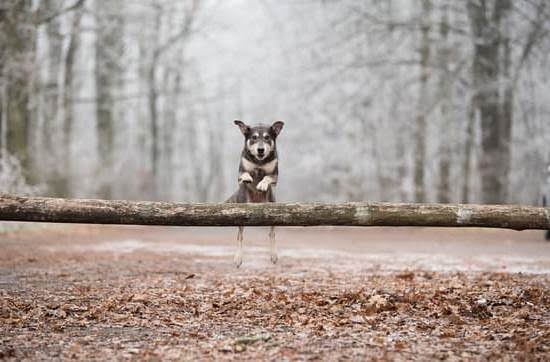Should I crate train a 2 year old dog? Crate training is a widely debated topic among pet owners, with varying opinions on its effectiveness. However, understanding the benefits of crate training for dogs can help make an informed decision. Crate training provides a secure and safe space for dogs, especially when they need to be confined for their safety or during transportation. It can also aid in housebreaking, preventing destructive behavior, and reducing anxiety in dogs.
Crate training involves teaching your dog to associate the crate with positive experiences, making it a comfortable place for them to rest and relax. This method can be particularly helpful for pet owners who work long hours or have busy schedules, as it provides a designated area for their dog when they are away from home. Additionally, crate training can be beneficial in situations where the dog may need to stay at the veterinarian’s office or travel by plane.
When it comes to crate training a 2 year old dog, there may be some differences compared to training younger puppies. Older dogs may already have established behaviors and habits that could affect their response to crate training. However, with patience and consistency, it is possible to successfully introduce crate training to an older dog. Understanding these age considerations and tailoring the training approach accordingly will be crucial in achieving positive results.
Crate Training Basics
Crate training is a valuable tool for dog owners looking to provide structure, security, and comfort for their canine companions. It involves using a crate or kennel as a safe space for the dog to retreat to when needed. The crate serves as a den-like environment where the dog can rest, relax, and feel secure. Crate training can also help with housebreaking, preventing destructive behaviors, and managing separation anxiety.
What Is Crate Training?
At its core, crate training involves teaching your dog to view their crate as a positive and safe space. This process helps them develop good manners and prevents them from engaging in unwanted behaviors when unsupervised. The key is to introduce the crate gradually and make it a pleasant experience for your furry friend.
How Does Crate Training Work?
Crate training works by utilizing the natural denning instinct of dogs. In the wild, canines seek out small, enclosed spaces to rest and feel secure. By providing your dog with a crate that mimics this den-like environment, you are giving them a designated area where they can feel safe and comfortable. Gradually increasing the time spent in the crate and rewarding good behavior can help your dog see it as their own special place.
Age Considerations
Crate training a 2-year-old dog may present some unique challenges compared to crate training a puppy, but it is definitely still possible and can be beneficial. At two years old, dogs are typically past the destructive chewing phase and may have developed some habits that could make crate training a bit more challenging. However, with patience, consistency, and proper techniques, crate training can still be successful for older dogs.
One important difference to consider when crate training a 2-year-old dog is their level of comfort and familiarity with their surroundings. Older dogs may have already established certain routines and preferences, so introducing them to a new confinement space like a crate might take some time for adjustment. It is crucial to make the crate a positive and inviting space for your dog by using treats, toys, and bedding to create a comfortable environment.
Another factor to keep in mind when crate training an older dog is their ability to hold their bladder for longer periods compared to puppies. While puppies may need frequent potty breaks throughout the night, adult dogs should be able to hold it through the night.
However, if your 2-year-old dog has not been properly house trained or if they have anxiety issues related to confinement, it may take more time and effort to help them adjust to the crate. Patience and consistency are key in helping your older dog succeed in crate training.
Ultimately, whether you should crate train a 2-year-old dog depends on your individual dog’s needs and personality. Some dogs may benefit greatly from having a safe space of their own where they can relax and feel secure, while others may find it distressing. It is essential to observe your dog’s behavior and reactions during the training process and make adjustments as needed to ensure that they are comfortable and happy.
Addressing Misconceptions
When considering whether to crate train a 2-year-old dog, it is important to address common myths and misconceptions surrounding this training method. One of the most prevalent myths is that crate training is cruel or inhumane. In reality, when done correctly, crate training can provide a safe and comfortable space for your dog to relax and feel secure. It should not be used as a form of punishment, but rather as a positive training tool.
To further debunk the myth that crate training is cruel, it’s essential to understand that dogs are den animals by nature. Crates mimic the den-like environments dogs would seek out in the wild for safety and security. When introduced properly and used appropriately, crates can become a beloved retreat for your furry friend.
Another misconception about crate training is that older dogs, such as 2-year-olds, cannot be effectively trained using this method. While it may take more time and patience compared to training a puppy, older dogs can still benefit from crate training. The key is to go at their pace, making sure they feel comfortable and slowly introducing them to the crate in a positive manner.
When deciding whether or not you should crate train a 2-year-old dog, consider these common myths and remember that with proper guidance and understanding, crate training can be a valuable tool in improving your dog’s behavior and overall well-being.
Step-by-Step Guide
Crate training a 2-year-old dog can be a beneficial and effective way to provide them with a safe and secure environment, especially when you are not around to supervise. While some may question whether it is too late to start crate training at this age, the truth is that dogs of any age can benefit from crate training.
By following a step-by-step guide, you can successfully introduce your 2-year-old dog to their new crate and help them feel comfortable and secure.
Here are some key steps to follow when starting crate training with your 2-year-old dog:
1. Introducing the Crate: Start by placing the crate in a quiet and familiar area of your home. Leave the door open and allow your dog to explore the crate at their own pace. You can encourage them to enter the crate by placing treats or toys inside.
2. Creating Positive Associations: Make the crate a positive place for your dog by feeding them meals near the crate or placing their favorite bedding inside. You can also use treats or toys to reward them for going into the crate voluntarily.
3. Gradual Enclosure: Once your dog is comfortable entering the crate, start closing the door for short periods while you are present. Gradually increase the amount of time they spend in the crate, always rewarding calm behavior.
Remember that consistency and patience are key when introducing your 2-year-old dog to their new crate. It may take some time for them to adjust, but with positive reinforcement and a gentle approach, they should soon see their new space as a safe haven rather than a source of anxiety or confinement.
Overcoming Challenges
Crate training a 2-year-old dog can come with its own set of challenges, particularly when it comes to addressing resistance and anxiety. One common misconception is that older dogs are set in their ways and cannot be successfully crate trained.
However, with patience, consistency, and understanding, most dogs can adapt to crate training at any age. It’s important to remember that crate training is not about punishing your dog or restricting their freedom; rather, it provides them with a safe and secure space of their own.
When dealing with resistance during crate training, it’s essential to take things slow and not force your dog into the crate. Start by making the crate a positive environment by placing treats and toys inside, allowing your dog to explore the space at their own pace. Encourage your dog to enter the crate voluntarily without closing the door initially. Gradually increase the time they spend inside while providing positive reinforcement for calm behavior.
Anxiety may also be a factor when crate training an older dog. Signs of anxiety include whining, barking, and attempting to escape the crate. To address this, make sure your dog has plenty of exercise before crating them and avoid using the crate as a form of punishment.
Additionally, consider providing comforting items like blankets or clothing with your scent to help ease their anxiety while in the crate. With patience and understanding, you can help your 2-year-old dog overcome resistance and anxiety during crate training.
| Benefits of Crate Training Older Dogs | Dealing With Resistance | Addressing Anxiety |
|---|---|---|
| Provides a safe space for rest | Take things slow and be patient | Ensure plenty of exercise before crating |
| Aids in housetraining efforts | Avoid forcing the dog into the crate | Use comforting items like blankets with scent |
| Prevents destructive behavior when unsupervised | Use positive reinforcement for calm behavior | Avoid using the crate as punishment |
Crate Training Tips
Do: Establish a Positive Association
When crate training a 2 year old dog, it is important to make the crate a positive and inviting space for your furry friend. Start by placing comfortable bedding, toys, and treats inside the crate to create a welcoming environment. You can also feed your dog their meals inside the crate to associate it with something enjoyable. Additionally, praise and reward your dog whenever they voluntarily enter the crate on their own.
Don’t: Use the Crate as Punishment
One of the biggest mistakes pet owners make when crate training is using the crate as a form of punishment. The crate should never be associated with negative experiences or isolation. Avoid using the crate to discipline your dog or leaving them inside for extended periods as a way to “teach them a lesson.” This will only lead to resistance and anxiety towards the crate.
Do: Gradually Increase Crate Time
As you begin crate training your 2 year old dog, start with short periods of time in the crate and gradually increase it as your pup becomes more comfortable. This will help prevent any feelings of confinement or distress. Remember to provide plenty of breaks for exercise, potty breaks, and social interaction throughout the training process. Patience is key when it comes to successfully crate training an older dog.
By following these dos and don’ts for effective crate training, you can help ensure a positive and successful experience for both you and your 2 year old canine companion. Remember that every dog is unique, so be patient, consistent, and attentive to your dog’s needs throughout the training process. With time and dedication, you can help your furry friend see their crate as a safe and cozy retreat rather than a source of stress or discomfort.
Alternatives to Crate Training
Crate training is a popular method for dog owners to provide their pets with a safe and comfortable space while also aiding in housebreaking and behavior management. However, some may wonder if crate training is suitable for a 2-year-old dog who may already have established habits and behaviors. The answer to the question “Should I crate train a 2-year-old dog?” ultimately depends on the individual dog, its needs, and the owner’s preferences.
While crate training can still be beneficial for older dogs, it is essential to approach the process with patience and understanding. Older dogs may take longer to adjust to being crated, especially if they have never been exposed to it before.
It is crucial to introduce the crate gradually, making it a positive and inviting space for your 2-year-old furry companion. Using treats, toys, and positive reinforcement can help create a sense of comfort and security associated with the crate.
In addition to crate training, there are alternative methods that pet owners can explore when it comes to training their 2-year-old dogs. Some of these options include positive reinforcement training, clicker training, obedience classes, and behavior modification techniques.
Each dog is unique, so finding the right approach that suits your pet’s personality and needs is essential for successful training. Remember that consistency, patience, and positive reinforcement are key regardless of the method you choose to train your 2-year-old dog.
| Benefits of Crate Training | Alternative Training Methods |
|---|---|
| Aids in housebreaking | Positive reinforcement training |
| Provides a safe haven | Clicker training |
| Aids in behavior management | Obedience classes |
Case Studies
Crate training is often associated with puppies, but the benefits of this training method can also extend to older dogs, including 2-year-olds. While some may believe that crate training an adult dog is not possible or necessary, the truth is that it can be a valuable tool in addressing behavioral issues, providing a safe space for your dog, and aiding in house training efforts.
One real-life example of successful crate training with a 2-year-old dog is Max. Max was a rescue dog who had never been properly trained or socialized. He would exhibit destructive behaviors when left alone at home and had accidents indoors.
His owner decided to introduce crate training to help provide Max with a sense of security and structure. With patience, consistency, and positive reinforcement, Max slowly began to see his crate as a safe haven rather than a punishment. Over time, his behavior improved significantly, and he now voluntarily goes into his crate for naps and bedtime.
Another case study involves Luna, a 2-year-old anxious dog who struggled with separation anxiety. Her owner started crate training as a means to help Luna feel more secure when left alone. By gradually acclimating Luna to her crate and making it a positive experience through treats and praise, Luna’s anxiety lessened over time.
She now sees her crate as a comforting retreat and no longer exhibits signs of distress when her owner leaves the house. These real-life examples highlight the potential success of crate training with older dogs and demonstrate how it can positively impact their well-being and behavior.
Conclusion
In conclusion, the decision to crate train a 2-year-old dog ultimately depends on the individual dog and their unique needs. While crate training can be a valuable tool for promoting good behavior, providing a safe space, and aiding in house training, it may not be suitable for every dog. It is important to consider your dog’s temperament, past experiences, and overall well-being before embarking on crate training.
If you are unsure whether crate training is the right choice for your 2-year-old dog, consult with a professional dog trainer or veterinarian for guidance. They can provide personalized advice based on your dog’s specific circumstances and help you make an informed decision. Remember that crate training should always be done in a positive and gentle manner, taking into account your dog’s comfort and emotional state.
Ultimately, the key to successful crate training with a 2-year-old dog lies in patience, consistency, and understanding. By following the step-by-step guide provided in this article, addressing any challenges that arise with compassion and persistence, and incorporating alternative training methods when necessary, you can create a positive crate training experience for both you and your furry companion.
Frequently Asked Questions
Can a 2 Year Old Dog Be Crate Trained?
Yes, a 2-year-old dog can be crate trained, although it may take more time and patience compared to training a younger puppy. Consistency, positive reinforcement, and making the crate a comfortable environment are key factors in successfully crate training an adult dog.
What Age Is Too Late to Crate Train a Dog?
It is never too late to crate train a dog, regardless of age.
While it may take longer for an older dog to adjust to being crated if they have never been exposed to it before, with proper training techniques and making the crate a positive place for the dog, they can learn to be comfortable in it at any age.
How Long Can a 2 Year Old Dog Stay in a Crate?
A 2-year-old dog should not stay in a crate for more than 4-6 hours at a time during the day. It is important to give them regular bathroom breaks, exercise, mental stimulation, and human interaction outside of their crate to prevent boredom and potential behavior issues.
Nighttime crating can last longer as dogs tend to sleep through the night without needing bathroom breaks.

Welcome to the blog! I am a professional dog trainer and have been working with dogs for many years. In this blog, I will be discussing various topics related to dog training, including tips, tricks, and advice. I hope you find this information helpful and informative. Thanks for reading!





